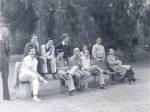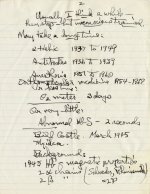|
The scientific research Pauling conducted during the 1930s and early 1940s gave him
a unique knowledge of structural chemistry, physical chemistry, immunology, and biology
as well as an experimental understanding of hemoglobin and its derivatives (oxyhemoglobin
and carbonmonoxyhemoglobin). Pauling's diverse scientific background allowed him to
contribute significantly to the understanding of why the red blood cells in people
suffering from sickle cell anemia distort into a crescent-shape. His theory of the
sickling process of hemoglobin led him to define sickle cell anemia as a molecular
disease. This innovative concept of molecular disease inspired others to analyze the
molecular composition of human hemoglobin.
When Pauling learned of sickle cell anemia in 1945, he drew on his knowledge gathered
from his previous researches on hemoglobin and immunology and immediately thought
that he comprehended the sickling process. Pauling later reflected that the idea had
occurred to him in "2 seconds."
|
|
Click images to enlarge

Members of the Caltech Chemistry Department. 1941.

"The Impact of Molecular Information on Disease." January 20, 1972.
"[M]anufacture of abnormal molecules...is determined by the genetic constitution of
the patient; the disease is inherited. A disease of this sort, caused by molecules
of abnormal structure present in the patient in place of the molecules of normal structure
that are present in normal human beings, is called a molecular disease."
|

